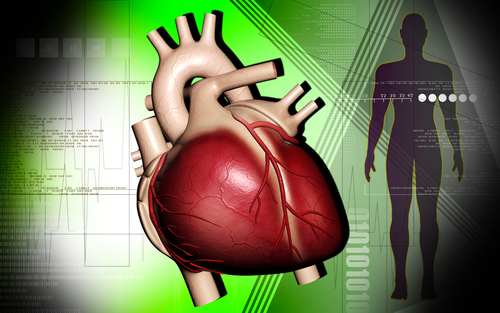New study suggests modifications in diagnosis protocol for myocardial infarction
M3 India Newsdesk Feb 27, 2018
A study funded by the National heart, Lung and Blood Institute and presented at the CMR 2018 in Barcelona, Spain has noted that the medical community may need to devise more accurate methods to diagnose heart attacks as standard medical tests miss nearly two-thirds of heart attack diagnoses.

New research conducted suggests that nearly 2/3rd of heart attacks are currently missed by the existing diagnostic techniques.
Unrecognised heart attacks (myocardial infarction; MI) refer to events which do not show any visible signs of MI among patients and are missed in routine medical examinations, but are captured by tests such as an electrocardiogram (ECG) or magnetic resonance imaging (MRI) imaging, which are more sensitive and accurate in diagnosing MI.
The outcomes for recognised and unrecognised heart attacks are similar in the long term
According to the lead author of the study, Dr Tushar Acharya, a cardiologist at the NHLBI, the critical gap that this study fills is that the difference in long-term outcomes of patients with unrecognised and recognised heart attacks was unknown. Naturally, short-term prognosis for undetected MI was poor, but this study now tells doctors that the outcomes for recognised and unrecognised heart attacks are similar in the long term and that doctors need to revamp their diagnosis protocol for patients showing possible signs of heart disease.
The study included 935 community-dwelling participants of ICELAND MI, a sub-study of another study being conducted in Iceland. At the start of the study, participants underwent an ECG and CMR and were categorised into one of three groups: unrecognised MI (asymptomatic, missed on routine medical care, but picked up by MRIs), recognised MI (symptomatic and picked up by CMR), and those without myocardial infarction (MI) as confirmed by an MRI.
The average age of participants was 76 years and 52% were females. At the beginning of the study, 91 participants (10%) had recognised MI, 156 (17%) had unrecognised MI, and 688 (74%) had no MI. Simply put, nearly 63% of the patients who had myocardial infarctions were not diagnosed to have it until they had MRIs done on them. Their heart attacks were missed during routine examinations because the diagnostic techniques do not seem to be accurate enough to catch them.
Moreover, the study underlines the fact that among all patients screened and included in the study, unrecognised heart attacks were more common, which means that the current routine screenings were proving to be grossly inadequate and that among patients who had MI, the higher proportion was among those who did not have any clinical manifestation of the disease.
More alarmingly, the long-term trends in fatality for both these cases were similar. At ten years, the death rates were similar in patients with unrecognised and recognised MI (49% and 51%, respectively) and significantly greater than those with no MI (30%). This compares to rates at five years, where the death rate of patients with unrecognised MI (13%) was higher than in those with no MI (8%) but was lower than in those with recognised MI (19%). This shows that as time progresses and MI is not diagnosed due to the lack of a clinical manifestation, the chances of death increase. This is problematic since undiagnosed patients are naturally not prescribed any medications such as statins, aspirin, beta blockers and even for more possible surgical intervention which may save lives.
It is also much more likely that those patients aware of the fact that they are suffering from a cardiovascular disorder are likely to be more careful and are more likely to adopt a healthier lifestyle.
The study and its investigators are not suggesting that each patient be screened with MR imaging, since it would be impractical and expensive to do so, but they do suggest that when patients do show visible signs of cardiac disease, it would now be advisable to begin screening them with tools such as magnetic resonance imaging. This might lead to a more accurate diagnosis among many more people who are actually suffering from myocardial infarction but are not diagnosed to have it. Beginning therapy earlier during the course of the disease is likely to be more beneficial for the patients.
-
Exclusive Write-ups & Webinars by KOLs
-
Daily Quiz by specialty
-
Paid Market Research Surveys
-
Case discussions, News & Journals' summaries